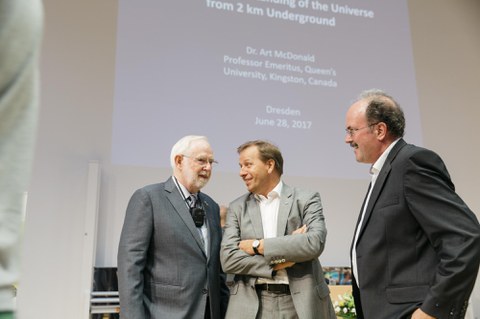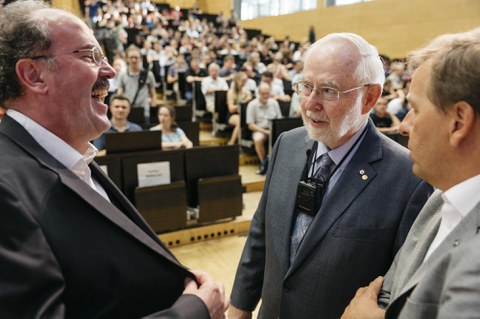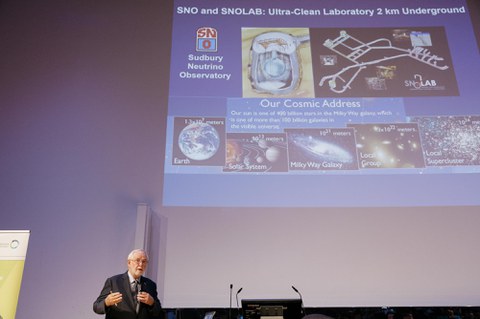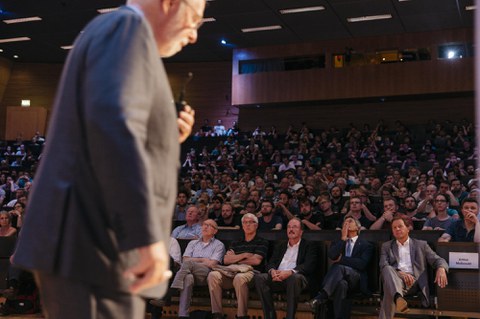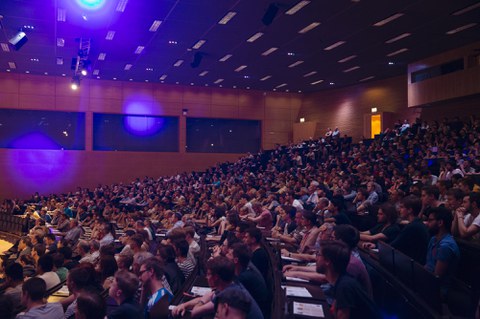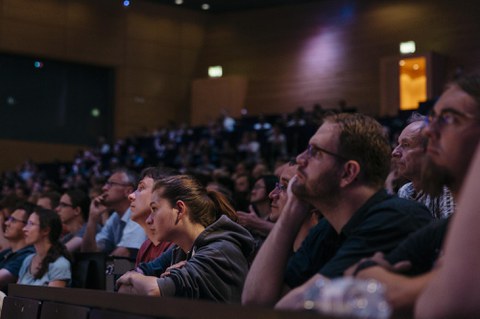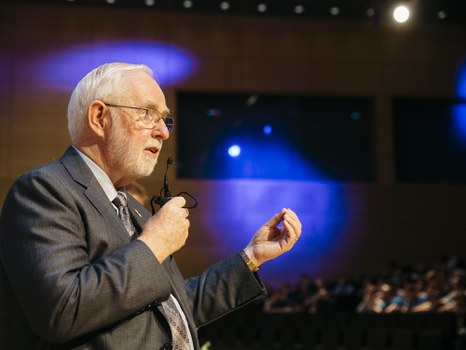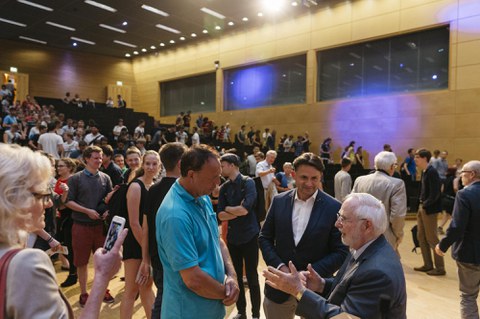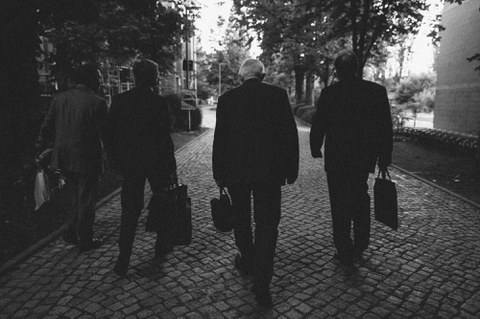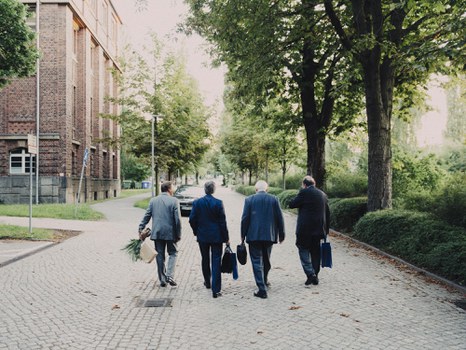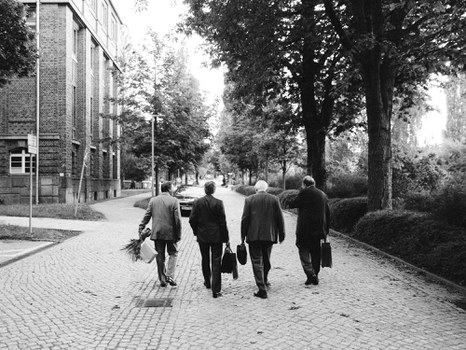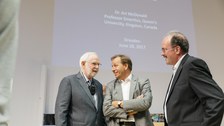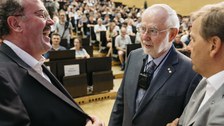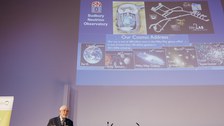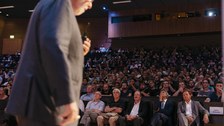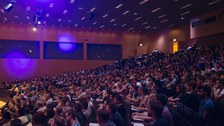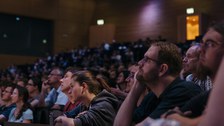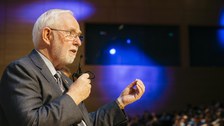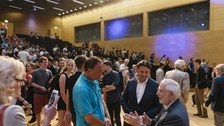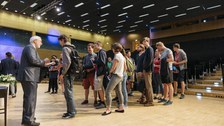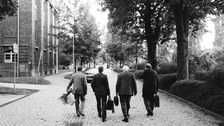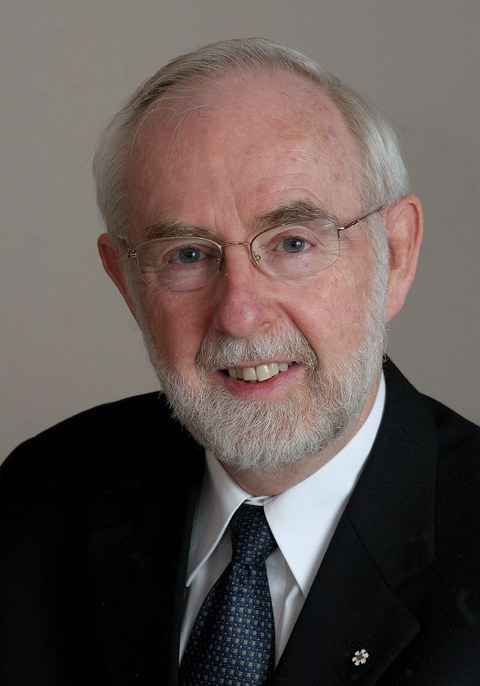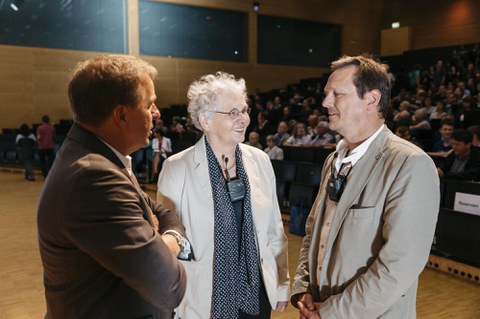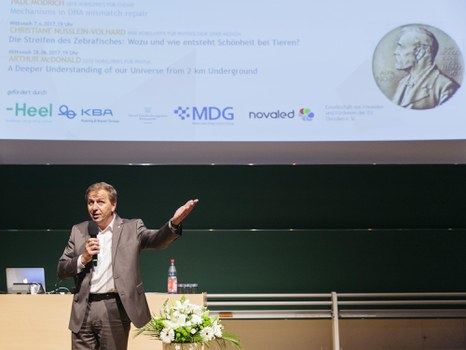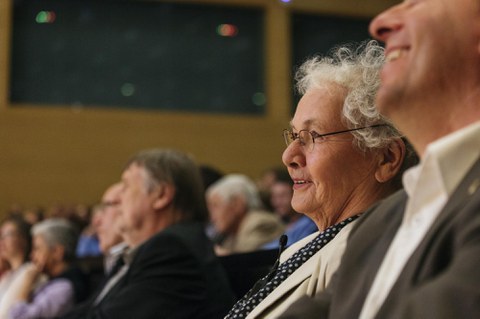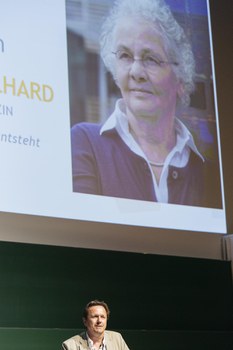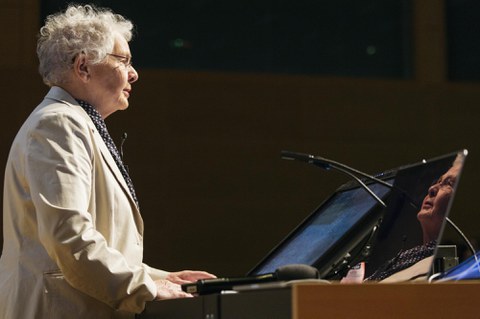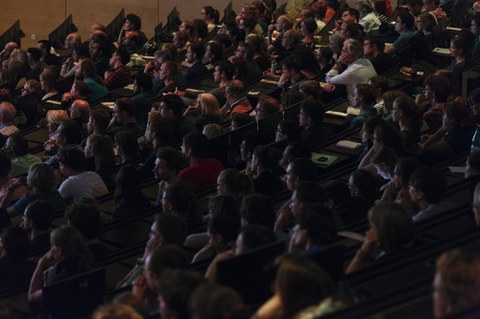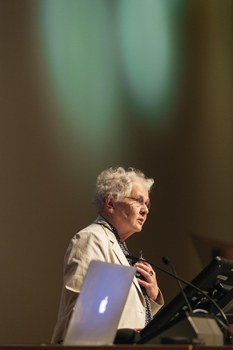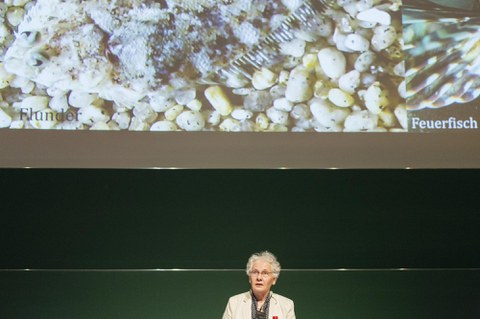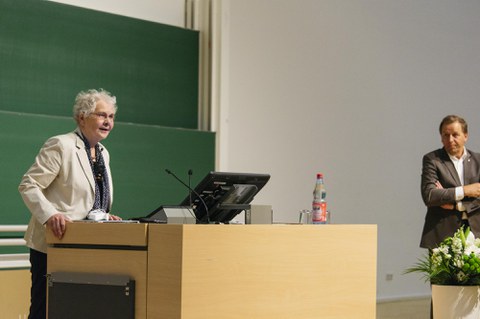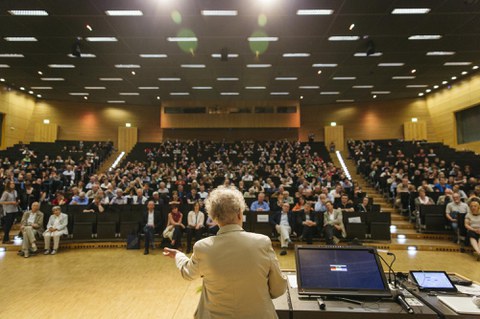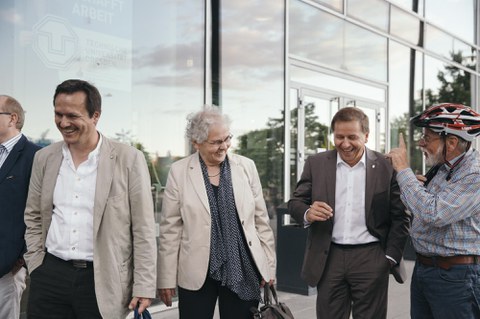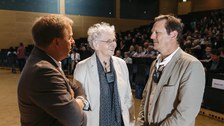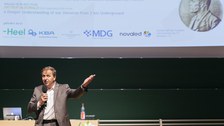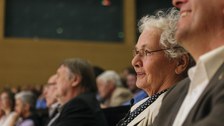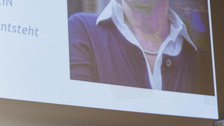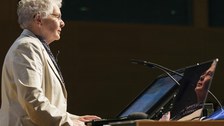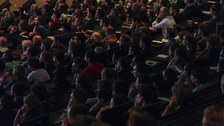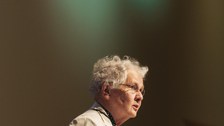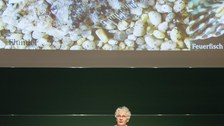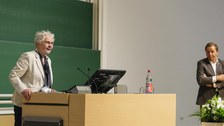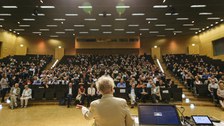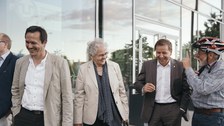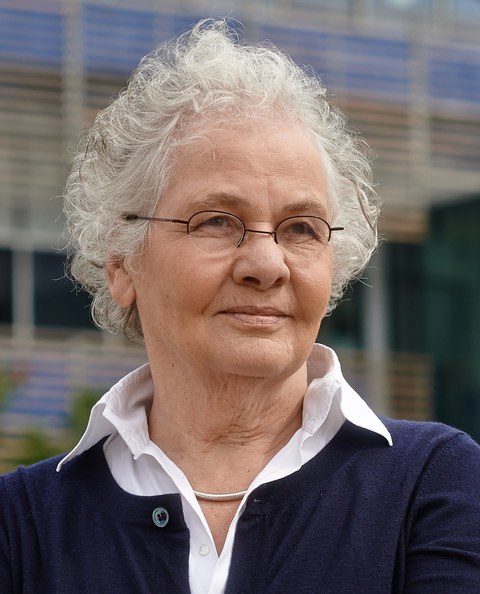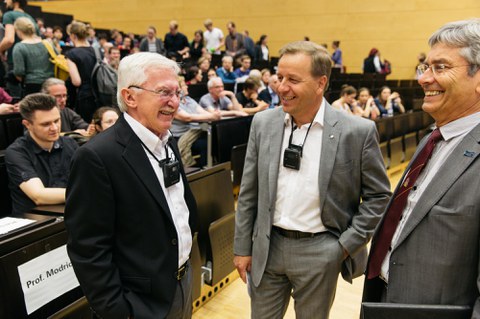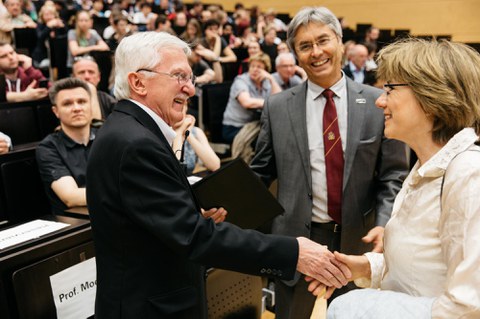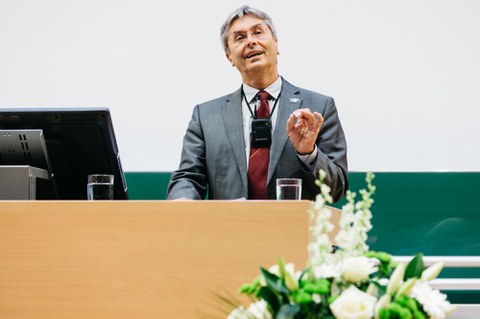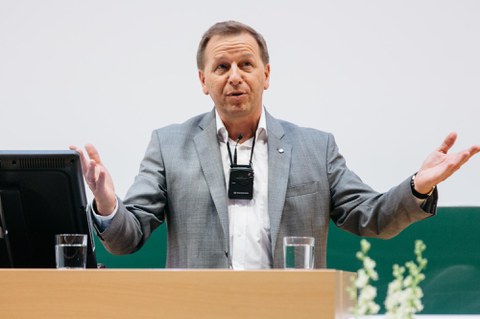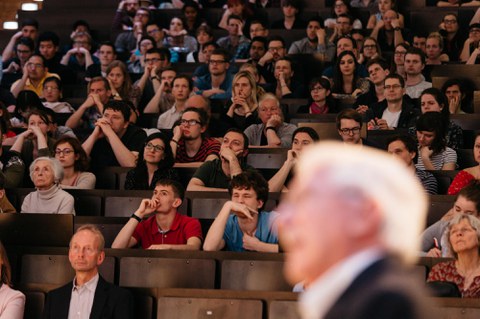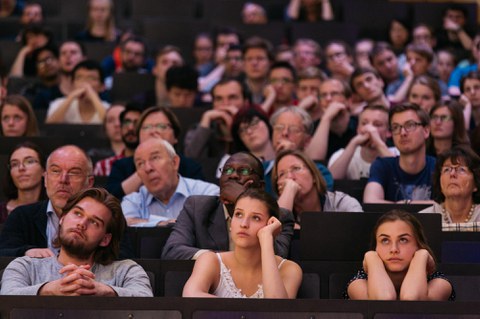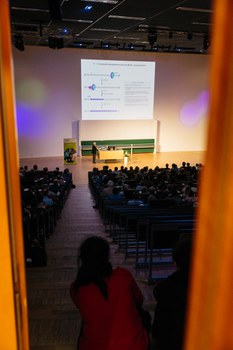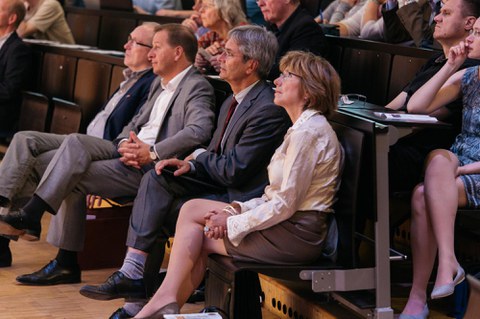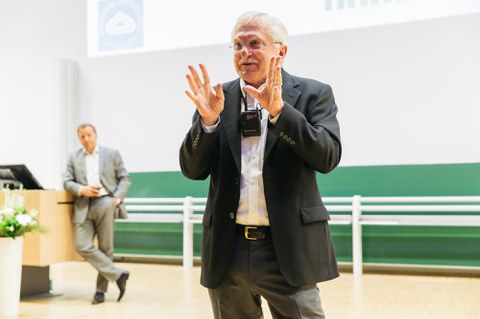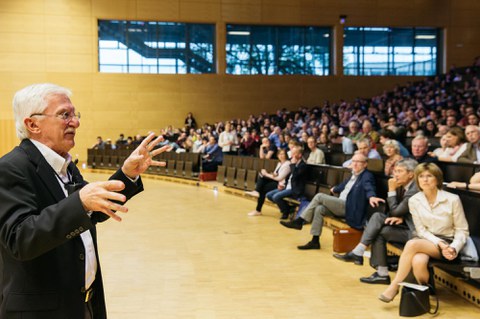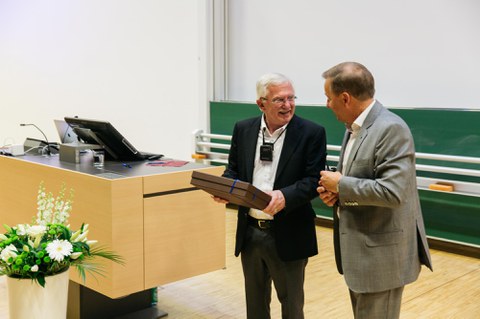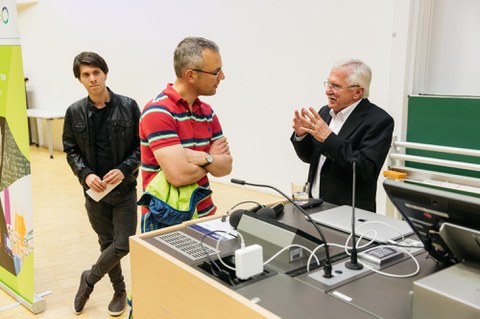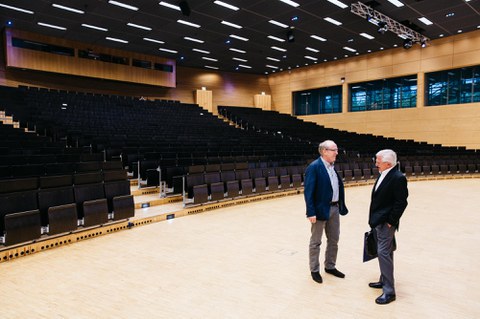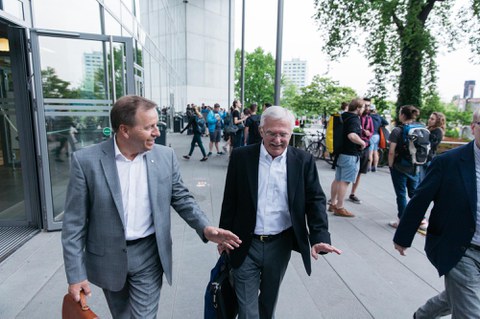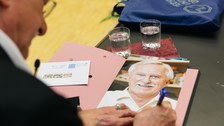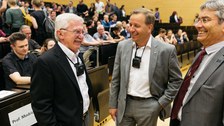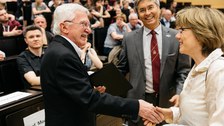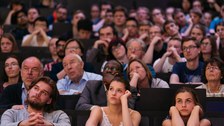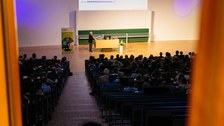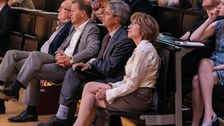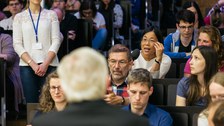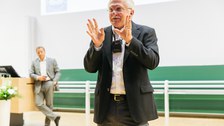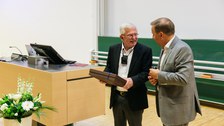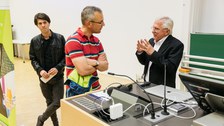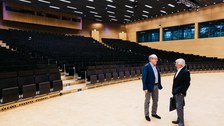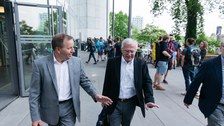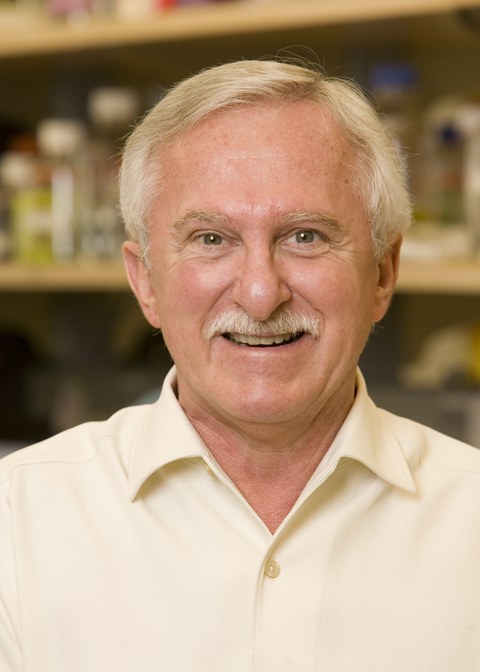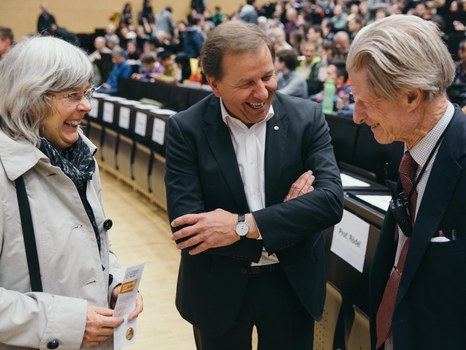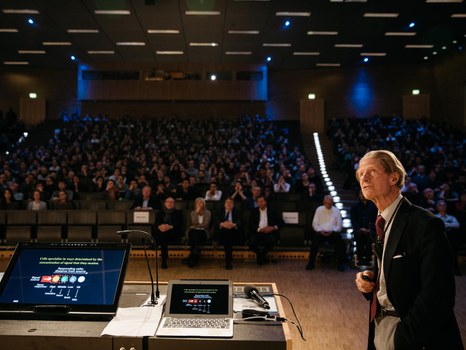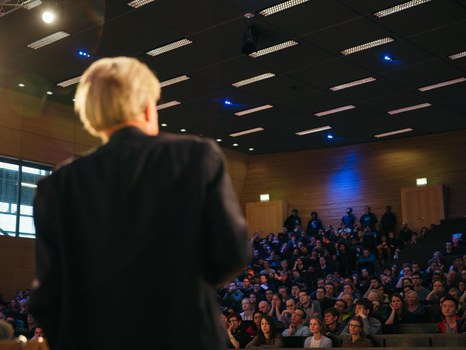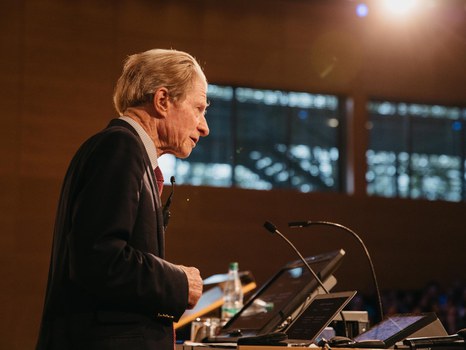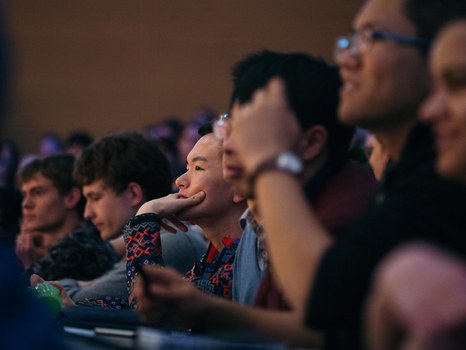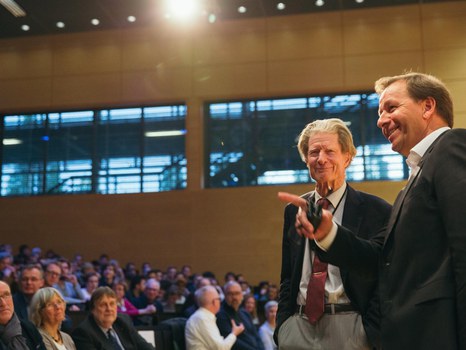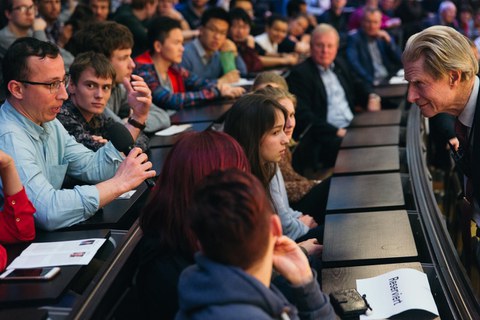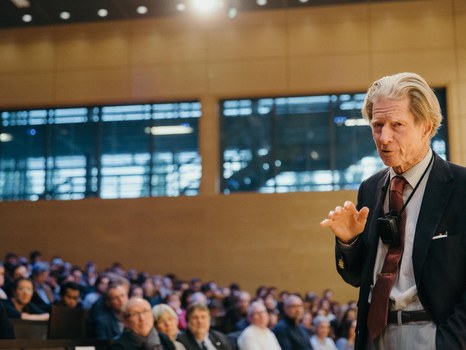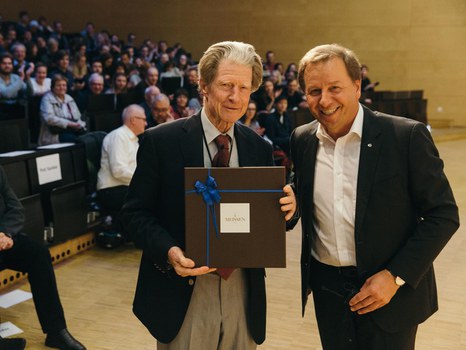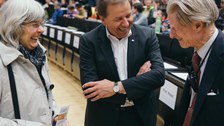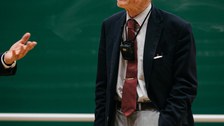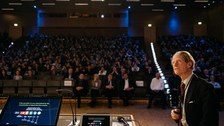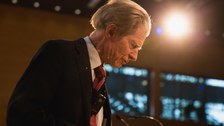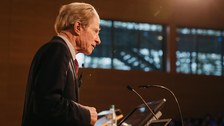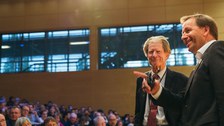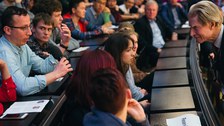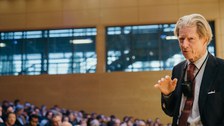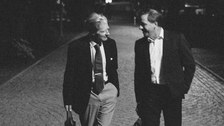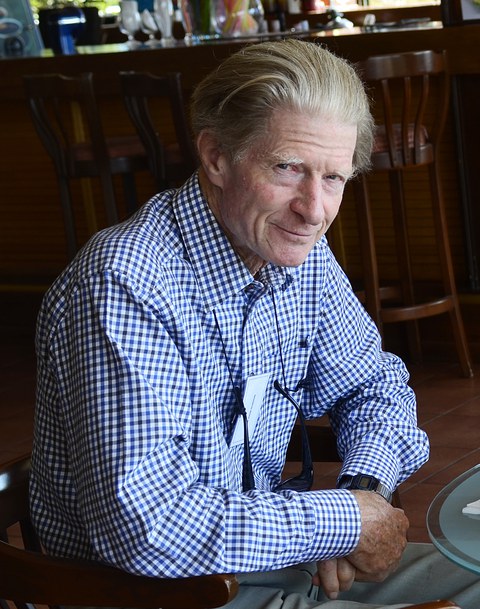Nobel Laureates lecture series 2017
Table of contents
For the generous support of the lecture series 2017, the School of Science explicitly would like to thank: Novaled, Molecular Diagnostics Group, KBA-Sheetfed Solutions AG & Co. KG, Heel, the Hotel Taschenbergpalais Kempinski and Gesellschaft der Freunde und Förderer der TU Dresden e.V.
Arthur B. McDonald
2015 Nobel Prize in Physics
A Deeper Understanding of our Universe from 2 km Underground
The Canadian particle physicist Arthur B. McDonald was awarded the Nobel Prize in Physics 2015 together with Takaaki Kajita from Japan. Both researchers succeeded in proving that neutrinos have mass, a fact contradictory to the Standard Model of Elementary Particle Physics. Neutrinos are the most frequent elementary particles in our universe apart from photons. They pass in billions per second through our body without causing any interaction. Arthur McDonald and his team at the Sudbury Neutrino Observatory (SNO), an experimental facility in a mine in Canada in 2001, studied neutrinos created in nuclear reactions in the sun. Measurements showed that some neutrinos had been switching their types during their way to earth. This phenomenon is called neutrino oscillation. There are three types of neutrinos: electron -, muon – and tau neutrinos. Demonstrating that the particles can switch between these types, the researches proved that neutrinos have mass, though may it be very small. The SNO team, to which Prof. Kai Zuber from TU Dresden belongs for more than 15 years already, succeeded in a break-through in neutrino research and in our understanding of the universe.
Christiane Nüsslein-Volhard
1995 Nobel Prize in Physiology or Medicine
Wednesday, 7 June 2017, 7pm: Die Streifen des Zebrafisches: Wozu und wie entsteht Schönheit bei Tieren?
Christiane Nüsslein-Volhard is a German developmental biologist and geneticist. She was the first German woman to be awarded the Nobel Prize in Physiology or Medicine in 1995 for the discovery concerning the genetic control of early embryonic development. She shares the prize with her colleague Eric F. Wieschaus and the US-American geneticist Edward B. Lewis. In 1980, Christiane Nüsslein-Volhard and Eric Wieschaus succeeded in identifying and classifying 15 genes in the egg of a fruit fly (Drosophila melanogaster) that direct the cells to form a new fly. They furthermore found out that these genes are activated by signal substances. For the fly, Nüsslein-Volhard and Wieschaus identified four such substances acting in a predetermined order and concentration. In the course of their research, it became obvious that the fly embryo is in many ways representative for embryos of other animals or even of humans. In her later work, Christiane Nüsslein-Volhard preferred the zebrafish as object of study.
Paul Modrich
2015 Nobel Prize in Chemistry
Mechanisms in DNA mismatch repair
Biochemist Paul Modrich was awarded the 2015 Nobel Prize in Chemistry along with Tomas Lindahl and Aziz Sancar "for mechanistic studies of DNA repair." Paul Modrich worked over decades on the idea of decoding the repair mechanism in the DNA code. Just as with all cell mechanisms, chromosome replication is not free from mistakes, misspellings in the genetic code are constantly happening. In 1989, Modrich succeeded in identifying the mismatch repair system (MMR) in cells. By studying bacterial viruses, Paul Modrich showed how methyl groups attached to the DNA molecule act as signals for repairing incorrect replications of DNA. Repair enzymes then cut out the mismatched base and replaces it. Mismatch repair is a mutation avoidance system, if it does not work properly, cancer and other diseases can develop.
Sir John B. Gurdon
2012 Nobel Prize in Physiology or Medicine
Somatic cell nuclear transfer: memory of the past versus hope for the future
The British developmental biologist Sir John B. Gurdon was awarded the 2012 Nobel Prize in Physiology or Medicine "for the discovery that mature cells can be reprogrammed to become pluripotent.” As early as in 1962, Gurdon published his groundbreaking results from his experiments with frogs, which, in the beginning, were skeptically reviewed by other researchers of the time. For his studies, Gurdon removed the nucleus of fertilized egg cells from a frog and replaced it with the nucleus of cells taken from a tadpole's intestine. Some of these modified egg cells grew into new frogs. With a frog cloned from an intestine’s nucleus, Gurdon found the prove that the mature cell, just as embryonic stem cells, still contain the genetic information needed to form all types of cells. This pioneering study was supposed to become the fundamental work for stem cell research. Sir John Gurdon shares his Nobel Prize with the Japanese stem cell researcher Shinya Yamanaka, who was the first to generate induced pluripotent stem cells (iPS cells) in 2006.

